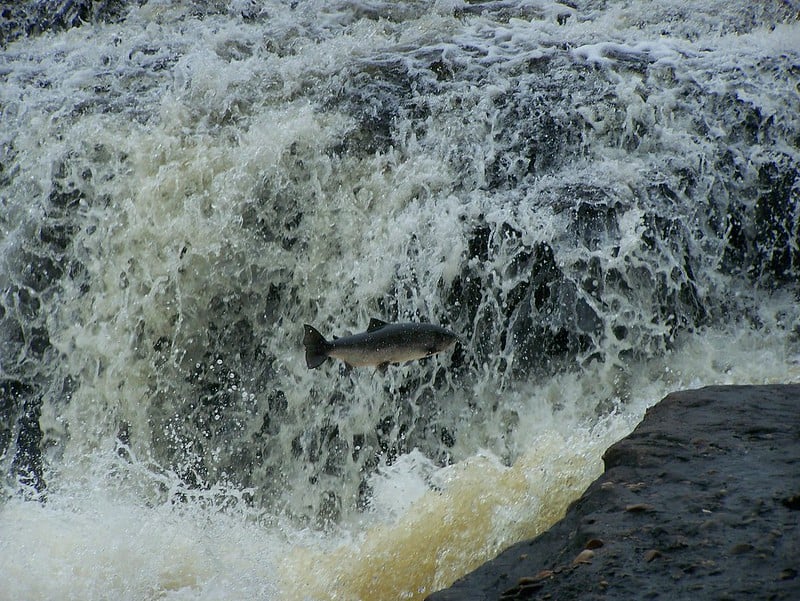Norway Bans Salmon Fishing on 33 Rivers

Photo: Derrick Mercer/Flickr CC2.0
Norway has banned salmon fishing on 33 of its rivers in an effort to protect dwindling stocks of Atlantic salmon. According to Hatch Magazine, Atlantic salmon returns this year are below half of what’s considered healthy. Last year, returns were down 30% from 2022.
Norwegian officials cite global warming and fish farms as the leading causes of the declines. Specifically, parasites from fish farms can escape the enclosures and impact wild fish, leading to diminished stocks across the board.
With global warming, the Norwegians say that warmer river and ocean temperatures impact food webs, decreasing food availability and directly impacting salmon smolt size, according to Hatch Magazine. Smaller salmon returning as adults are unhealthier, and fewer adults are returning as a result of diminishing food webs.
Of note is that neighboring Sweden has very little salmon farming compared to Norway, and Swedish salmon runs are seeing similar declines.
The impact of aquaculture can’t be overlooked, however, as Hatch notes in this paragraph:
“The Norwegian Government licenses an industry that produces half of all the world’s farmed salmon and fish farm mortality from all causes, including sea lice, was nearly 63 million fish last year. Many of the pens are in fjords that connect ocean-run Atlantic Salmon with their home rivers, bringing wild fish into contact with farmed lice. According to the Norwegian Institute of Marine Research, fish farm lice-related mortality of adult wild salmon was estimated at 50,000 fish in 2019. Since then, fish farming has expanded.”
It seems that fish farming has a larger impact on salmon populations than the Norwegian officials care to admit.
Somehow, British soccer star David Beckham found himself wrapped up in the middle of this controversy, as well. The Daily Mail reports that Beckham was recently photographed fishing for salmon in Norway, on one of the closed rivers. It appears Beckham was given permission to fish because he made a donation to the owner of the Laerdal River, and all the fish he caught were used to breed more salmon at a Norwegian fish hatchery. That’s apparently a common practice in Norway, where wealthy individuals can buy their way past fishing closures, so long as the fish are used to breed more salmon.
All this is to say that Norway has plenty of similar problems with its fisheries as we do here in America. It’s worth remembering for us anglers that conservation issues aren’t just limited to the United States.
Sustainable Marine Fuel Program Rolls Out in Florida
Conservation Alliance Gains New Members











